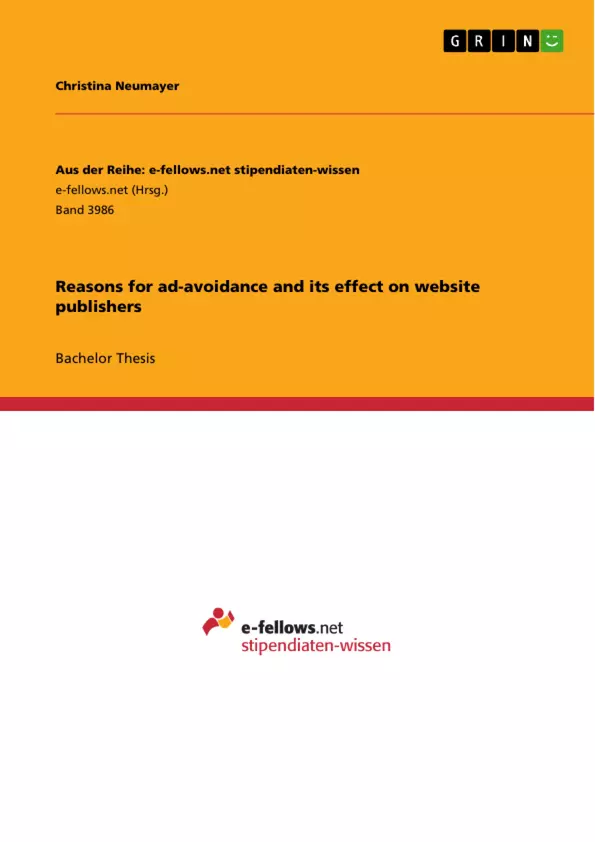This literature review summarises current research on general attitudes towards the presence of advertisements in the media. It analyses reasons for and methods of ad-avoidance, focussing on ad-avoidance using ad-blockers on the internet. The detrimental effects of ad-blockers on website revenues and quality underline the ongoing conflict of interests between website publishers and ad-blockers. Furthermore, the thesis at hand summarises publishers' reactions to ad-blockers and provides an outlook on possible solutions to the conflict.
Inhaltsverzeichnis (Table of Contents)
- Introduction
- Background
- Consumer attitudes towards advertisements
- Influencing factors on ad-acceptance
- Influencing factors on ad-avoidance
- Ad-avoidance techniques of consumers
- Ad-blockers
- Reasons to use ad-blockers
- Consequences and impacts of ad-blockers
- Reactions to ad-blockers by content publishers
- Acceptable ads: a redefinition of the online advertisement model
- Consumer attitudes towards advertisements
- Discussion
- Influencing factors on ad-avoidance
- The impact of ad-blockers
- Alternatives to ad-generated revenues
- The importance of content quality
- Bundling as a profitable strategy
- Conclusion and Implications
- Limitations
Zielsetzung und Themenschwerpunkte (Objectives and Key Themes)
This thesis investigates the rise of ad-blockers, analyzing their impact on the online advertising landscape and exploring potential solutions for publishers. It examines consumer attitudes towards advertisements, including factors influencing ad-acceptance and ad-avoidance, and the consequences of ad-blockers for both publishers and users.
- Consumer attitudes towards online advertising and the role of ad-blockers
- The impact of ad-blockers on the online advertising ecosystem and content publishers
- Alternative revenue models for online content creation and distribution in the presence of ad-blockers
- The importance of content quality and value in attracting and retaining audiences
Zusammenfassung der Kapitel (Chapter Summaries)
- Introduction: This chapter provides an overview of the online advertising landscape, highlighting the growth of online advertising and the increasing prevalence of ad-blockers. It defines ad-blockers and their functionalities, introducing the historical development of ad-blocking technology.
- Background: This chapter delves into consumer attitudes towards online advertisements, exploring factors influencing both ad-acceptance and ad-avoidance. It examines various ad-avoidance techniques employed by consumers, including ad-blockers.
- Discussion: This chapter analyzes the impact of ad-blockers on the online advertising ecosystem, exploring their consequences for both publishers and users. It also examines alternative revenue models for online content creation and distribution, emphasizing the significance of content quality.
Schlüsselwörter (Keywords)
This thesis focuses on the key concepts of online advertising, consumer attitudes towards advertisements, ad-blocking technologies, revenue models, and content quality in the digital age. It delves into the impact of ad-blockers on publishers and explores potential solutions to overcome the challenges posed by this emerging trend.
- Quote paper
- Christina Neumayer (Author), 2019, Reasons for ad-avoidance and its effect on website publishers, Munich, GRIN Verlag, https://www.grin.com/document/1139504



